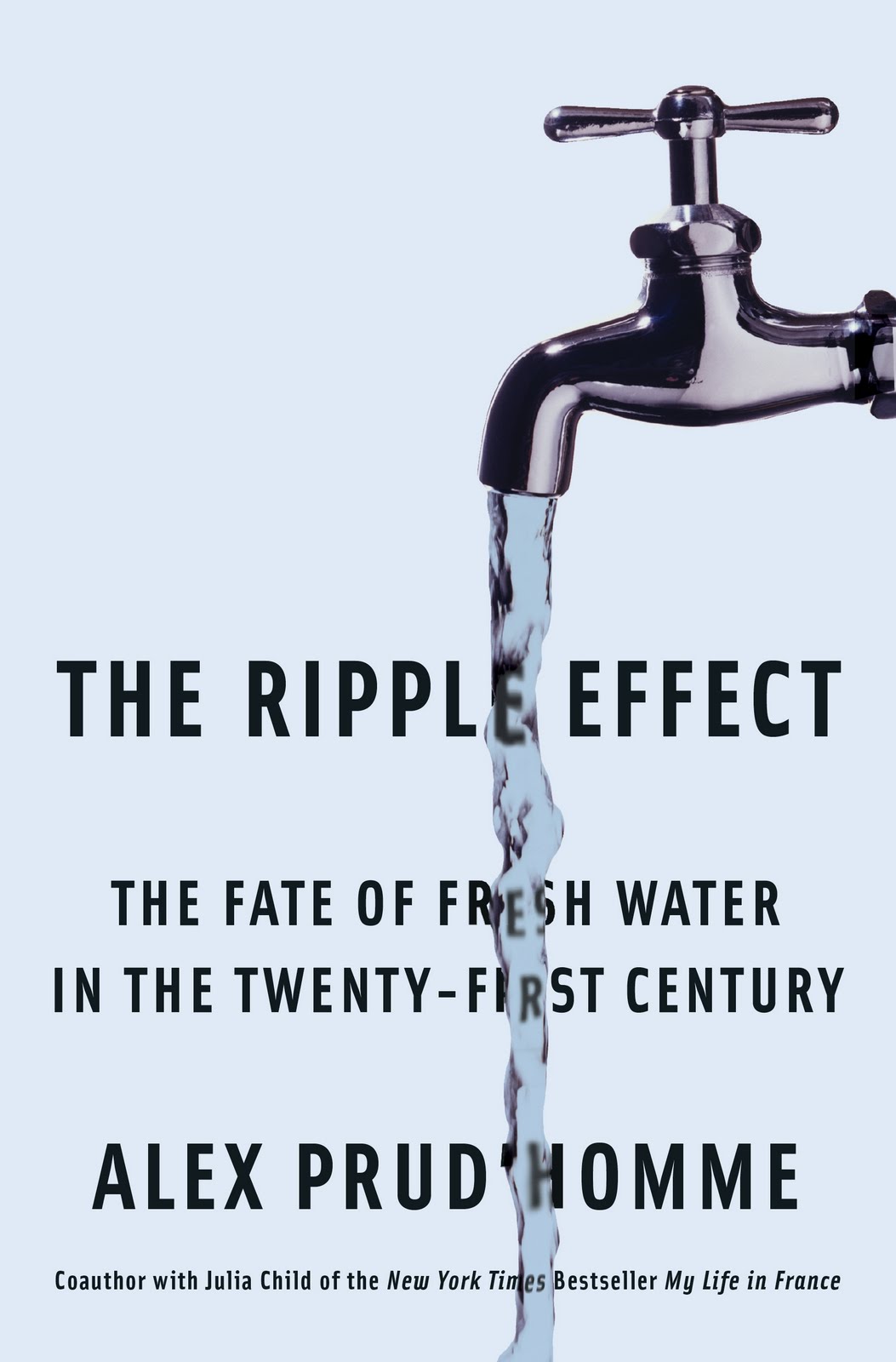The Ripple Effect by Alex Prud’homme is a needed warning to readers about how current policies, trends and behaviours are quickly threatening the very thing we cannot live without: water.
Prud’homme provides a thorough overview of “some of the most significant water challenges today” from bottled water to “fracking” to dams to cloud seeding. While the case studies focus on the United States, Prud’homme points to global trends and highlights cases in other countries to provide context.
The book is divided into five sections: Quality, Drought, Flood, Water in the Twenty First Century and the concluding chapter, The Ripple Effect where Prud’homme recommends ways to address water problems. The cases are thoroughly researched often providing historical context to current issues. Prud’homme visits many of the locales and travels with Peter H. Gleik, internationally recognized water expert. Some examples highlight instances of environmental racism and how decisions or inaction pollute or degrade water sources in working class and immigrant neighbourhoods.
Prud’homme describes in detail pollution cases such as Green Point and Newton Creek in New York City where sewage contamination and oil spills threatened local groundwater. He also makes the insightful point that a large spill like the BP spill can capture a nation’s attention. Yet small scale spills or “tiny leaks from the cars, trucks, motorcycles…and other machines we use every day” go unnoticed.
The book highlights the growing problem of eutrophication in lakes and rivers and how high levels of nitrogen and other chemical nutrients have created over 405 recognized dead zones throughout the world.
In the Drought section, Prud’homme focuses on Las Vegas — a tremendously water-intensive city in the middle of the desert — as an example of dangerous water policies calling it “The City That Wasn’t Supposed To Be.”
Several issues have at their core the issue of water commodification and privatization. Prud’homme points to the controversial debate of water being a commodity or a human right. Land grabs such as Baca Ranch or T. Boone Picken’s plan to commodify the Ogallala’s water are examples of water privatization. Prud’homme discusses the harmful impacts of bottled water and dispels the myth that bottled water is cleaner and safer. Although he notes success to privatization schemes, cases such as Atlanta, Georgia — the largest privatization contract in U.S. history — and the well known Cochabamba “water war” reveal the reality of rate increases and deteriorating water quality associated with privatization schemes.
The Ripple Effect highlights virtual water, the amount of water used to produce a good, in day-to-day items and the impacts that water-intensive goods have on a region’s water sources.
A chapter is devoted to the impacts of water in energy production such as tar sands mining and “shale oil, a new type of fuel not yet on the market.” Prud’homme explains hydraulic fracturing or “fracking,” a process that releases sand, water and chemicals at high pressure to fracture shale where natural gas is trapped. Fracking not only causes water contamination but it is also an extremely water intensive-process using “3 to 8 million gallons of water per day, the rough equivalent of a day’s supply for forty thousand people.”
Prud’homme examines mining in Bristol Bay which holds one of the richest mineral deposits in the world. A proposed gold and copper open-pit mine by Anglo American PLC and Canadian company Northern Dynasty Minerals is a serious threat to the five connecting rivers, salmon fisheries and Native tribes who have lived in the region for 3,000 years.
This book explores the dangers of some proposed solutions to water scarcity and drought. In desalination, every 100 gallons of sea water produces 15 to 50 gallons of water and 50 to 85 gallons of brine, which destroys aquatic life when dumped back into the sea. Cloud seeding is the process by which silver iodide or frozen carbon dioxide is sprayed over clouds to force clouds to rain or snow. In 2008, in Xinjiang, China — “home to the world’s largest cloud seeding initiative” — this process caused a blizzard and “heavy snows in other cities collapsed roofs, injured scores and killed at least eight people.”
The Ripple Effect is an alarming compendium of examples of how economic development is encouraged to the detriment of the environment. The book is a convincing argument for the need restore balance between economic gain and preservation of our natural environment. We live in a culture now where we take our water sources for granted, believe that technology can always save us and where greed blinds those who lead us.
The Ripple Effect signals a critical need to change not only legislation and policies but also our culture. As Prud’homme states, “it is not enough to simply reengineer our water infrastructure; we must reengineer the way people think about water and our relationship to it.”—Emma Lui
Emma Lui is the national water campaigner for the Council of Canadians.



